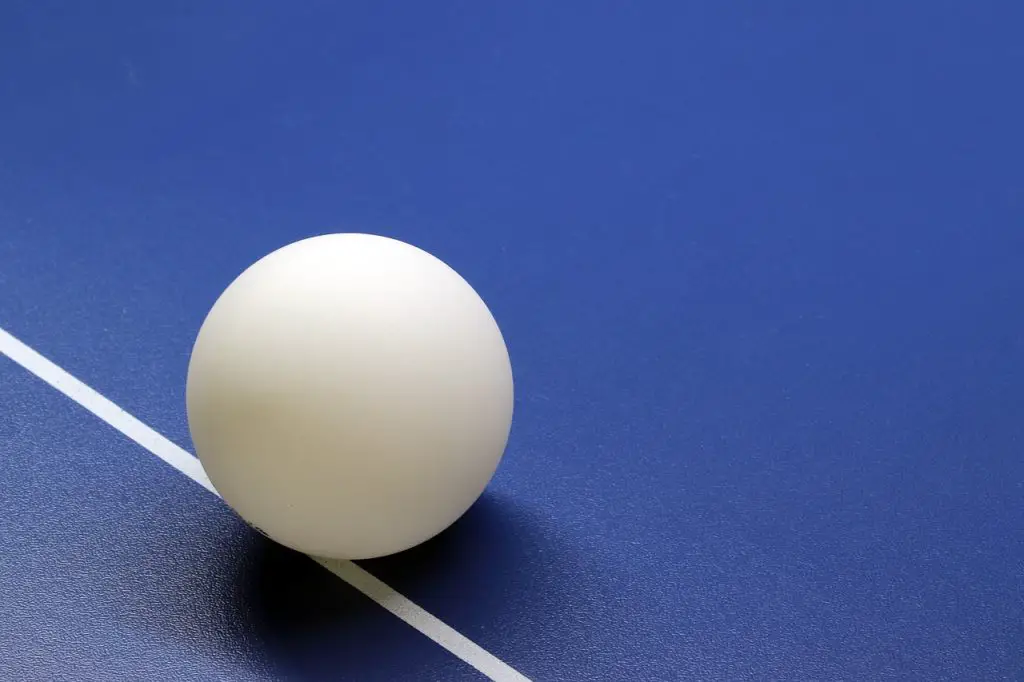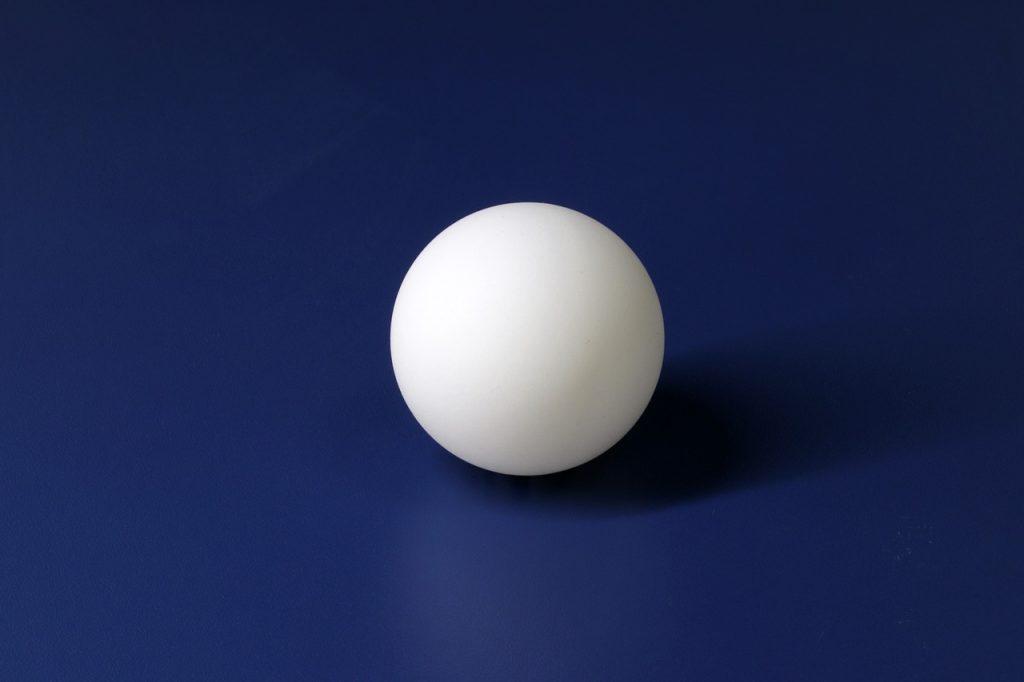We know that there are many different types of ping pong balls available. But, what makes a ping pong ball good?
If you’re looking to improve your game, you may want to invest in top-quality ping pong balls. But, how do you know which ping pong balls are the best? In this post, we’ll help you choose the best ping pong balls available.
Materials of Ping Pong Balls

We know when you search or are eager to get something. You are conscious enough to check the product materials it makes along with the quality.
The quality depends on the necessary materials it is made of. There are two types of ping pong balls you will see that are made of plastic polystyrene, and the other is celluloid.
Now the question is, what kind of ball you should choose. Well, as per the International Table Tennis Federation(ITTF), we will recommend you take the polystyrene ball as it is used in the competition.
But the thing is, you will get almost the same experience from both the balls. The celluloid balls are comparatively cheaper than the polystyrene balls.
Both the balls are typically friendly in playing the match. Our recommendation is for you to go for the standard of ITTF.
Another noticeable thing about the ping pong balls is the size. The poly balls are a little bit larger than the celluloid balls. In general, 40mm in size, the celluloid balls are whereas 40+ the poly balls are.
The Meaning of Rating System

As you have different options to pick any ping pong balls from the market, you can see they are rated based on their category from three to one star.
What does that all mean? As a general concept, the top number explains the best quality, and the bottom number tells the lower class.
So does here, the three-star means the best balls and one star means the low quality. When you know the rating, you might not go for the one star. The one-star ball is less durable whereas the three-star balls are much better than that one.
- One-star balls are perfect for the kids playing as the ball is soft.
- Two-star balls are entirely upgraded from the one-star balls if you want to practice for your skill improvement or in a better training session.
- Three-star rating balls are top-quality balls. You can not raise questions about the quality of this one, and that is standard for the game-play and in competitive tournaments.
- There are some balls that have no rating like Novelty balls, but they are rated from hard to soft. Though they are used to play for different purposes like recreation time, they come in a variety and can not be used in any tournaments.
So all these points which we mentioned above will help you to get the best ping pong balls before buying. You can get the best playing experience by playing ping pong with the balls.
How to Check the Quality of a Ping Pong Ball
People love to buy the best quality, ping pong balls. But do you know how to check the quality of a ping pong ball? If you do not have any idea, it is okay. We will tell you the methods of how you can check that!
Hardness Test of Ping Pong Balls
First thing, you need to pick a ball in your hand. Then place your finger on it and create pressure on the surface of the ball. Cover all the areas of the ball moving one after one. If you see any distortion in a three-star ball, that will not be a good quality ball.
As a three-star ball, the manufacturer maintains its quality not to be distorted. On the other hand, you may find a tiny distortion in one and two-star balls. But that won’t be for long.
After removing pressure from the surface, it will come to its previous shape. If that does not happen, that will count as lousy quality balls.
Spin Test of Ping Pong Balls
In the spin test, you have to check whether the ball is a proper round shape or not. Firstly, place the ball on top of a ping pong table, then try to spin it. You have to keep a close look at the ball top. If the ball wobbles, that indicates, the ball is not in perfect shape or round.
For a three-star ball, usually, it will not happen. Yet, if it happens, that is not acceptable from high-quality balls. Whereas, people do not expect it from one or two-star balls as well. When they invest in buying a premium quality ball, they expect high service in return.
Types of Balls
Like other ping pong equipment, balls have several models as well. There are three different categories you can divide: competition balls, training balls, and lastly, recreational balls.
Competition Balls
Competition level balls are made by maintaining proper guidelines from ITTF. The International Table Tennis Federation has some unique rules for making competition-level balls. The balls that are made following those rules are considered to use in international or national tournaments.
Competition-level balls are unique and of a high standard because of their build quality and their premium quality materials.
ITTF approved those balls in the competition, which have a “40+” surface top. All three-star balls have a ’40+’ surface.
Training Balls
Training balls are quite different from recreational balls or competition balls. Coming with a big box is a common phenomenon for training balls.
In local clubs, a lot of big boxes can be found, or if you visit a ping pong club, you can see the mentors often hold a packet of training balls around the players.
Training balls are not the same as competition balls, both in price and quality. It is less expensive than competition balls but a higher price than recreational balls.
The players may not get an exact bounce from those balls though it is lightweight. Most two-star balls are used as training balls.
Recreational Balls
The ping pong game is a compelling and exciting both indoor and outdoor game over the world. Many people play it for recreational purposes, whereas others are not. For recreational purposes, you will find recreational balls as well, which may save your cost.
It brings more excitement to your game with family members at home or at a home party. There is some lack of recreational balls like they may not be round in shape, very lightweight, made from low-quality materials, and it does not offer a proper bounce, even.
One-star nuts are considered recreational balls.
ITTF Requirements For Ping Pong Balls
ITTF does not allow any mismeasurement in manufacturing standard balls. It has some strict rules for ping pong balls, and manufacturers are to follow them eventually.
Physical Properties
- The standard ball diameter should be 40mm. On average, it becomes from 39.5 to 40.4mm.
- The ball’s mass should be 2.7 grams though it must remain between 2.67 and 2.77 grams.
- A ping pong ball needs to be appropriately rounded; for celluloid balls, its diameter needs to be .35mm, and .25mm for other balls.
- It must not swerve, which is another measuring process of roundness
- The ball must pass the bounce test. A ball must reach 240 to 260mm height after dropping from 340mm height to a steel block.
- It must have to pass the hardness test, which has been taken by a computerized device.
- The manufacturer must follow the thickness measurement while making a ball, though it is not mandatory nowadays.
Surface Properties
- Colors are quite crucial for ping pong balls, and it needs to be Orange or White, but it needs to be matt finish without shine.
- For additional stickers, the producer company needs ITTF permission regarding color and place to use it.
- Labeling is mandatory for non-celluloid as “40+” and “40mm” for celluloid balls. Manufacturers must follow the date code.
ITTF always rates balls under 3, and they have a bunch of approved balls on their website, which you can check there.
Conclusion
In conclusion, to choose top-quality ping pong balls, you need to know how to select the best ping pong balls for your game. There are many factors that will affect your decision. You should look for ping pong balls that have the right weight, bounce, and feel.

Hi, My name is Benjamin Fink and I am the author of the ping pong reviewed blog. I am a sports person learning and sharing my knowledge with others about ping pong and other sports.
I have been playing ping pong for the last 17 years and teaching people about the game and writing new things about the game through this blog When finding something new. I have participated in serious ping pong tournaments in my country.
